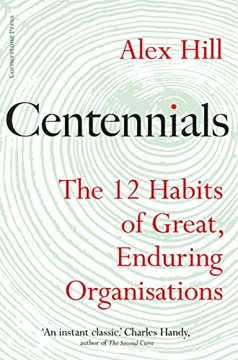Key Takeaways
1. The Centennial Paradox: Stable Core, Disruptive Edge
The Centennials have both a stable core and a disruptive edge, and they preserve a careful balance between the two.
Enduring success formula. Organizations that last for a century or more, dubbed "Centennials," achieve their longevity by mastering a delicate balance: maintaining an unwavering core of values and purpose while simultaneously fostering a disruptive edge of innovation and adaptability. This "radically traditional" approach allows them to navigate change without losing their identity, unlike many modern companies obsessed with short-term gains. For instance, the University of Oxford, founded in 1209, consistently prepares students for the future while upholding centuries-old academic traditions.
Short-termism's cost. Many contemporary businesses, particularly those focused on immediate shareholder value, suffer from an obsession with the "here and now." This short-term focus often leads to a dramatic reduction in their lifespan; the average S&P 500 company now survives only fifteen years, a fivefold decrease since the 1980s. This constant cycle of boom and bust creates significant friction and waste, hindering long-term societal progress on critical issues like climate change and education.
Atomic analogy. Centennials operate much like an atom, with a stable nucleus of core values, unwavering goals, and a culture that respects the past. Around this nucleus, "electrons" (people and ideas) are constantly in motion, bringing fresh discoveries and new perspectives. This dynamic interplay between stability and disruption generates the energy needed to propel them forward, ensuring they adapt slowly and carefully when change is necessary, rather than collapsing under pressure.
2. Purpose Beyond Profit: Build Your North Star
If you don’t positively shape society then, at some point, it will stop supporting you.
Higher purpose drives longevity. Centennials prioritize a "higher purpose" that transcends mere profit and turnover, aiming to positively shape society for decades to come. This long-term philosophy ensures they attract future generations of talent and money, recognizing that societal relevance is crucial for sustained existence. Examples include:
- All Blacks: Raise New Zealand's national profile.
- British Cycling: Improve UK health.
- Nasa: Increase understanding of the universe.
- Royal College of Art: Transform the world through art and design.
Beyond public entities. While often associated with public institutions, this mindset is also evident in long-standing private companies like Colgate, Levi Strauss, and Kellogg's. These firms integrate social and environmental goals into their core business, funding foundations and initiatives that align with their "north star." For instance, Levi Strauss invests over $10 million annually in projects supporting "better clothes that can be worn for longer," demonstrating that purpose and profit are not mutually exclusive.
The Sony lesson. Sony's trajectory illustrates the perils of losing sight of a higher purpose. Founded with the ambition to restore Japan's place in the world through innovation, it thrived for decades. However, after its founders stepped down in 1995, a shift to maximizing revenue and minimizing costs led to a decline in innovation and eventual massive losses. Apple, too, faced similar struggles when it deviated from Steve Jobs' vision of democratizing computing, only to recover when it re-embraced its purpose of changing people's experience of the world.
3. Cultivate Future Talent: Do It for the Kids' Kids
It’s about inspiring and developing kids too, as we want them to fall in love with science when they’re young, and study it as they grow older, so they can help us solve the problems we’ll need to solve, and will want to work with us.
Proactive talent pipeline. Centennials don't passively wait for talent to appear; they actively cultivate it from a young age. They understand that early engagement, inspiration, and skill development are critical to securing the next generation of employees. Nasa's annual Regolith Excavation Challenge, for example, offers a half-million-dollar prize to university students, not just to crowdsource solutions but to inspire future engineers and scientists.
Early intervention is vital. Research shows that career choices and skill development have roots in early childhood. Psychologists identify four stages of skill acquisition:
- Purposeful play (4-5 years): Fun, experimentation, introduction by a "passionate parent."
- Playful practice (7-10 years): Formal training with a "nurturing teacher," still fun-focused.
- Serious practice (10-15 years): Intense training with a "demanding teacher," independent practice.
- Serious performance (13-20 years): High-intensity training, competition, professional development.
These stages align with periods of hyper-brain development, making early nurturing crucial.
Consequences of neglect. The West Indies cricket team's decline after 1995 exemplifies the dangers of a disrupted talent ecosystem. Changes in English cricket rules and the allure of US sports like baseball and basketball siphoned off promising young athletes, severing the pipeline that had fueled their success for decades. Conversely, the rise of Jamaican athletics, driven by local running clubs and coaches, shows how nurturing talent locally can lead to world-beating results.
4. Anchor with Stable Stewards: Strong Roots & Mind the Gap
They are the people who oversee and guard the community values.
Stable stewards preserve culture. Centennials rely on "stable stewards" – long-serving individuals who embody and transmit the organization's core values and collective memory. These individuals, often two to three levels down from the top, are not necessarily managers but highly capable people with deep institutional understanding. Eton College's house masters, who serve for thirteen years and have decades of experience, are prime examples, ensuring the school's ethos is passed down through generations.
Disruption vs. continuity. While "disruptive experts" are essential for innovation, unguided disruption can lead to organizational collapse, as seen with Enron. Its CEO, Jeffrey Skilling, fostered a culture of constant churn and short-term ambition, leading to a lack of collective memory and ultimately, its downfall. Centennials, by contrast, maintain a careful balance: disruptive experts (1/3 to 2/3 of staff) drive change, while stable stewards (1/4 of staff) provide essential continuity and guidance.
Strategic succession planning. Centennials excel at multi-generational succession, ensuring a seamless handover of leadership. The All Blacks, after their 2007 World Cup defeat, learned the importance of long-tenured coaches and overlapping player generations. This approach, where new leaders are identified years in advance and mentored by incumbents, builds collective knowledge and prevents the instability seen in companies with high CEO turnover.
- All Blacks: Coaches like Graham Henry (8 years) and Steve Hansen (7 years) provided continuity.
- Eton College: New house masters shadow incumbents for two years.
- Nasa: Astronaut teams include a mix of veterans and new recruits.
This ensures that critical experience and wisdom are passed down, not lost.
5. Embrace Openness: Perform in Public & Give More, Get More
When the newcomer joined the group, the old-timers were told: “X’s [the newcomer’s] last task took a little longer to complete. X is from XYZ [group]. To help bring X up to date, why don’t you all tell her who you initially identified on your sheet as the murderer and then X will tell you who she thinks did it. You still have fifteen minutes for discussion.”
Strangers enhance decision-making. Centennials actively seek external perspectives, recognizing that "strangers" can significantly improve decision-making and foster innovation. A study on murder mystery solving showed that groups with a "stranger" present doubled their accuracy, as the outsider's presence disrupted groupthink and encouraged deeper scrutiny of evidence. This "disruptive nervousness" stimulates the brain's cerebral cortex, leading to clearer and better thinking.
Trust through transparency. Centennials operate with radical transparency, sharing their successes and failures openly. This builds trust, both internally and externally, which in turn attracts money and talent. Nasa, for example, openly shares its research, ambitions, and thousands of datasets, even compiling a YouTube channel with 9 million subscribers. This contrasts sharply with secretive organizations like Theranos, whose culture of opacity and refusal to allow external scrutiny ultimately led to its downfall.
The power of sharing. British Cycling's willingness to share its "marginal gains" strategies, even with potential competitors, has brought immense benefits, attracting expertise from Lotus Cars, McLaren F1, and the Royal Ballet. Pixar's early success was also built on an open culture, sharing its computer graphics discoveries and fostering relationships that proved invaluable. This "give more, get more" philosophy demonstrates that transparency, far from eroding competitive edge, actually strengthens it by fostering collaboration and attracting a wider pool of support and talent.
6. Leverage Porous Expertise: Brilliant People Part-Time
Our biggest breakthroughs always came when we worked with a brilliant expert from outside who looked at our problem in a completely different way.
External experts drive breakthroughs. Centennials actively seek out "disruptive experts" from outside their immediate field, recognizing that fresh perspectives are crucial for innovation. These experts, often working part-time or on multiple projects, bring diverse knowledge and challenge existing assumptions. British Cycling, for instance, credits outsiders for breakthroughs in helmet design, cycling posture, and mental preparation, describing it as "the perfect mix of expertise and ignorance."
BlackBerry's closed mindset. The downfall of BlackBerry exemplifies the dangers of insularity. Despite early warnings about the iPhone's potential, BlackBerry's leadership dismissed it, convinced their core market was secure. Their closed mindset and reliance on internal, conventional thinking prevented them from recognizing the iPhone as a fundamentally different product (a computer, not just a phone). This blindness to external disruption ultimately led to a catastrophic loss of market share and eventual collapse.
Cross-pollination of ideas. Centennials structure their teams to maximize the benefits of diverse expertise. They employ disruptive experts who:
- Work part-time, allowing them to stay current with other cutting-edge projects.
- Work full-time but on at least three different projects simultaneously, fostering cross-fertilization of ideas.
- Are encouraged to pursue multiple passions, as seen in Nobel laureates who often excel in arts or other sciences.
This approach ensures a constant flow of new ideas and prevents mental staleness, keeping the organization at the forefront of innovation.
7. Rigorous Talent Acquisition: Shake All Trees
We try to reach all segments of society.
Comprehensive talent search. Centennials understand that the quality of their people is paramount, leading them to undertake extensive and inclusive recruitment processes. Nasa, for example, receives 12,000 applications for just ten astronaut positions, meticulously assessing each one over an eighteen-month period. This rigorous approach ensures diversity in backgrounds and skills, moving beyond traditional military test pilots to include biologists, engineers, and medics for complex, long-duration missions.
Beyond CVs and interviews. Traditional recruitment methods (CVs, interviews, references) are often poor predictors of long-term success, with studies showing they predict only a quarter of someone's potential at best. Centennials go further:
- Personality and ability tests: To assess adaptability and problem-solving.
- Trial periods: Pret a Manger and Southwest Airlines use multi-week trials.
- External consultants: Royal College of Art uses consultants to "shake the trees" for hidden talent.
- Former staff involvement: All Blacks and Nasa bring back former coaches/astronauts for selection.
This multi-faceted approach significantly increases the accuracy of hiring decisions.
Bletchley Park's lesson. The British codebreaking center at Bletchley Park during WWII demonstrated the power of diverse, rigorous recruitment. Faced with cracking the German Enigma code, they recruited thousands from all walks of life—linguists, mathematicians, engineers, and a large proportion of women—using cryptic crosswords and logic puzzles to identify unconventional talent. This diverse mix of skills and backgrounds fostered a culture of open ideas and ultimately led to breakthroughs that shortened the war.
8. Prioritize Improvement Over Growth: Get Better, Not Bigger
Getting better not bigger is a constant Centennial mantra.
Growth is a distraction. Centennials view unchecked growth with caution, fearing it can dilute standards, distract from core values, and lead to bureaucracy. British Cycling, despite its extraordinary Olympic success (31 gold medals in seven Games), remains a relatively small, tight-knit organization focused on "marginal gains" and continuous incremental improvement, rather than rapid expansion. Their mantra is "How can we get better?" not "How can we get bigger?"
Nokia's cautionary tale. Nokia's rapid growth in the 1990s, driven by an obsession with market share, ultimately led to its downfall. Despite knowing about the iPhone's impending launch and its superior technology, Nokia's massive, bureaucratic structure prevented it from adapting swiftly. Its focus on launching more cheaper phones, rather than innovating, rendered it too slow and complex to compete, leading to a dramatic collapse.
Dunbar's number and optimal size. Centennials often adhere to "Dunbar's number," recognizing that human social groups have natural limits. They divide into:
- Families: 4-5 people (e.g., British Cycling squad, Nasa mission crew).
- Extended families: ~15 people.
- Communities: ~50 people (e.g., Eton house, Royal Academy of Music department).
- Sites: 100-150 people (maximum for effective social management).
This modular structure fosters strong bonds, reduces bureaucracy, and allows for agility. Companies like Gore, with over 10,000 employees, maintain this principle by having multiple small sites, each under 300 people, fostering innovation and preventing the inefficiencies of large, sprawling organizations.
9. Learn from Everything: X-Ray Success and Failure
Our motto is: Where there is failure, there is knowledge and understanding that doesn’t come with success.
Embrace "disruptive nervousness." Centennials actively seek out failure, viewing it as an inevitable and valuable part of learning and innovation. The Royal College of Art, for example, designs its first year to "break students down," expecting "90% failure and 50% surprise" to push boundaries. This "disruptive nervousness" prevents complacency, driving continuous improvement even in the face of success, as exemplified by British Cycling's constant self-critique despite medal hauls.
Nasa's hard lessons. The Challenger (1986) and Columbia (2003) disasters taught Nasa the critical importance of a culture that embraces disruptive nervousness. Initial post-Challenger changes were insufficient, as the agency remained bureaucratic and failed to listen to engineers. After Columbia, Nasa fundamentally shifted its culture:
- Psychologists advised on communication.
- Engineers regained autonomy.
- "Stop work" cards empowered staff.
This transformation, driven by a deep analysis of failure, led to a more open and learning-oriented environment.
Learning from "positive deviants." Centennials also learn from success, particularly from "positive deviants"—those who succeed against the odds. Jerry Sternin's work in Vietnam, tackling child malnutrition, focused on identifying poor but well-nourished children. He discovered they ate small, high-protein foods (crabs, shrimp) more frequently than recommended. By scaling these local successes, rather than fixing failures, malnutrition rates dramatically improved. This approach highlights that:
- Knowledge (techne) comes from repetition.
- Wisdom (metis) comes from adaptive experience.
Both are crucial for continuous improvement, requiring systematic analysis of both what goes wrong and what goes right.
10. Engineer Serendipity: Make Time for Random
Creativity comes from spontaneous meetings, from random discussions.
Creative inefficiency is vital. Centennials intentionally design environments that encourage "creative inefficiency" and random encounters, recognizing that innovation cannot be precisely engineered. They eschew rigid, siloed structures in favor of fluid teams and cross-departmental interactions. Toyota's "Lean" principles aim to eliminate waste, but Centennials embrace "motion" and "defects" as catalysts for new ideas.
Pixar's "Steve's Movie." Steve Jobs' redesign of Pixar's headquarters exemplifies this. Instead of separate buildings, he insisted on one central building with a vast atrium, strategically placing communal areas like bathrooms and cafés to force "cross-traffic." This design fostered spontaneous meetings and random discussions, which Jobs believed were essential for creativity. The "Braintrust," a team of directors and writers, further encouraged this by offering non-authoritative feedback, teasing out new ideas through catalytic questions.
Israel: The Start-Up Nation. Israel's highly innovative culture, with more start-ups and venture capital per capita than any other country, is a testament to engineered serendipity. Its mandatory military service throws young people from diverse backgrounds together, forcing collaboration and problem-solving under pressure. This builds a dense, lifelong network of contacts, where "everybody knows everybody." This "social graph" facilitates chance encounters and the rapid cross-pollination of ideas, as seen in the development of Waze, which grew from a community project to a billion-dollar acquisition by Google through a series of networked interactions.
11. Forge Bonds Through Shared Experience: Break Bread
You have got to trust them more than your mother, your father, or girlfriend, or your wife, or anybody.
Family culture drives performance. Centennials prioritize fostering a deep sense of "family" and kinship among their staff, recognizing that strong social bonds are critical for high performance. Research on soldiers in the Iraq War revealed they fight not for a cause, but for their comrades, a bond forged through shared experiences and constant interaction. This camaraderie leads to increased commitment, motivation, and team performance, often improving by 15%.
Liverpool's Boot Room. Bill Shankly, manager of Liverpool FC, cultivated a powerful family culture, symbolized by the "Boot Room" where coaches and staff debated ideas and bonded. Practices like mandatory cool-down periods and communal bus travel to training tripled social interaction, fostering a fluid, collaborative playing style that led to thirteen league titles. When these rituals were abandoned, performance suffered dramatically, only to be revived by Jürgen Klopp, who reinstated the "Boot Room" and emphasized relationships.
The science of social eating. Eating together is a powerful bonding mechanism. Oxford University's Robin Dunbar found that those who eat socially more often are happier, more trusting, and have more friends. Eating triggers the release of endorphins, promoting well-being and bonding. Centennials leverage this:
- British Cycling: Four annual five-day retreats for intensive training and communal living.
- Royal College of Art: Tutors eat with students from different programs.
- San Antonio Spurs: Coach Gregg Popovich organizes elaborate team dinners, carefully arranging seating to maximize interaction and foster deep relationships.
These practices build "psychological safety," where team members feel comfortable sharing vulnerabilities, leading to deeper discussions and better problem-solving.
12. Balance is Key: Core First, Edge Second
If there’s one central, overriding lesson that the Centennials teach us, it’s that lasting success comes from maintaining an organisation’s core culture while also driving change at the edge.
Radical tradition in action. The ultimate lesson from Centennials is the critical importance of balancing a stable core with a disruptive edge. Most organizations err by either clinging solely to past successes or recklessly chasing untested innovations. Centennials, however, are "radically traditional," understanding that true longevity comes from a dynamic interplay between these two forces.
Crisis response: Core first. When faced with a problem or crisis, Centennials instinctively turn to their stable core before engaging their disruptive edge. The All Blacks' response to their 2007 World Cup defeat exemplifies this:
- Stable Core: They didn't fire their coach but initiated a rigorous self-assessment, clarifying their purpose and reinforcing core values like the "no dickheads" policy. They stabilized their coaching team and player leadership.
- Disruptive Edge: Only after stabilizing the core did they bring in outside experts (criminal psychologists, cage fighters, ballet dancers) and rotate new players to shake things up and innovate.
This methodical approach allowed them to win the next two World Cups.
The path to enduring greatness. To achieve this balance, organizations must continuously ask themselves the twelve Centennial questions, assessing their strengths and weaknesses in both stability and disruption. A strong score in one area without the other indicates imbalance. By building on strengths first, then addressing weaknesses, and involving diverse generations in the process, organizations can cultivate a culture that is both resilient and innovative, ensuring they not only survive but thrive for generations to come.
Last updated:
Review Summary
Centennials receives mostly positive reviews, with readers appreciating its unique perspective on long-lasting organizations. The book explores 12 habits of enduring institutions, balancing a stable core with a disruptive edge. Reviewers find the case studies interesting and the framework accessible, though some question the relevance of certain examples. Readers value the book's focus on long-term success and its emphasis on reflection. While some find it more of a casual read than a structured framework, many appreciate its thought-provoking insights on leadership and organizational longevity.
Similar Books


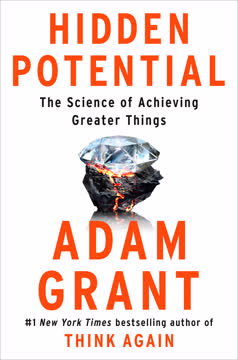
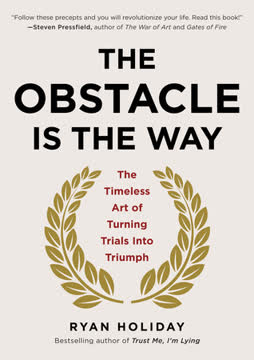
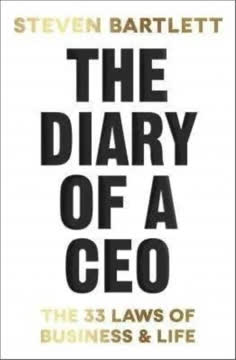
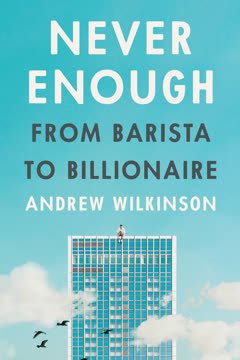
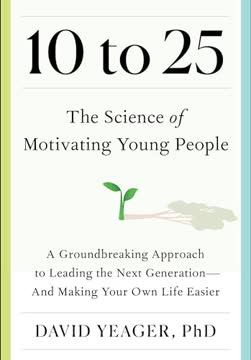
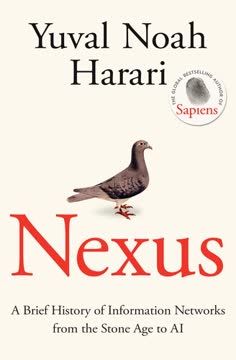
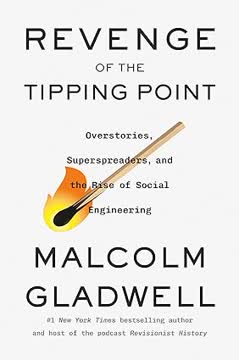
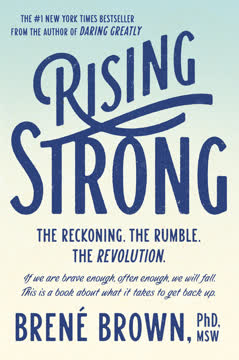
Download PDF
Download EPUB
.epub digital book format is ideal for reading ebooks on phones, tablets, and e-readers.
